
This content is protected against AI scraping.
Note: this post was originally part of a writing series, and some comments may refers to that.
Some people hate plotting. They often call themselves “pantsers,” because they write by the seat of their pants. Many people who hate to plot ahead say that they want to be able to discover things along the way.
Well, guess what – when you plot ahead of time, you still discover things along the way! They might be small and delightful things, or they might change your plot significantly.
[AdSense-B]
A plot is a road map. A road map doesn’t keep you from getting caught in a thunderstorm, or taking a side trip. It doesn’t even prevent you from changing your mind, and deciding you’re going to drive to Kansas City instead of Chicago.
It just keeps you from running out of gas in some crappy place in the middle of nowhere, with no cell phone service, wondering why you even left home.
I encourage you to figure out some important events ahead of time because lots of newer novel writers have trouble making things actually happen. But things have to happen for your story to be interesting. (Of course, many of you reading this don’t struggle with action at all.)
Anyway, good news! I have one recommendation for people who love plotting, and two recommendations for people who can’t stand it. And of course, most of us fall somewhere in the middle.
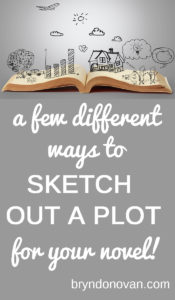
For People Who Enjoy Plotting
Do you like plotting worksheets? I recommend Jami Gold’s, which are legendary. (If they’re helpful, consider buying one of her novels! I did, since I’m linking to her.)
If you have your own method, than obviously, do that!
For People Who Hate Plotting
Okay, I have two different things you can try!
1. The Snowflake Method.
Several people have told me this really worked for them. I have yet to try it, and I should. I might love it. You can read about it here. It’s still a somewhat elaborate way of plotting, but it seems to feel comfortable for people who are dubious about plotting.
2. My “One Index Card” Method.
I’m calling it this because it’s so minimal, you could probably do it on a 3 x 5. Just figure out these things.
THE INITIAL THING THAT HAPPENS.
Something needs to happen near the beginning of your story that jogs your character out of her normal rut. (As I said last week, she could be jogging herself out of her own rut!) What is it?
THE FIRST BIG THING THAT HAPPENS.
This could be about 1/4 of the way into your story.
THE SECOND, EVEN BIGGER THING THAT HAPPENS.
This could be about 1/2 of the way into your story.
THE THIRD, EVEN BIGGER THING THAN THAT HAPPENS.
This might be between the halfway point and the 3/4 point.
THE HUGE THING THAT MAKES EVERYTHING SEEMS HOPELESS.
This might be around 3/4 of the way into your story, or it might be a little later.
THE RESOLUTION.
Your character takes her most dramatic action yet. (She’s come a long way from the girl we met on page one!) Could be good. Could be bad. The end!
Just a Few More Notes About Plot…
No matter how you approach your plotting, the big things that happen are probably going to be turning points for your character. He may have to make a decision, or take an action that he would never have imagined himself doing.
Hopefully, these big things are related. You probably don’t want a story where, say, your character’s big events are adopting a kitten, starting a new job, surviving a plane crash, and then surviving a nuclear holocaust. Those events escalate in drama and excitement — honestly, I’ve read worse stories — but they probably don’t hang together.
What holds your big plot points together? Usually, it’s a goal your character pursues, or a problem or situation she’s been thrown into.
Think about your plot points in relationship to your characters. These events should challenge them, and help them change and grow. (That’s a nice way of saying that you should be putting them through a little hell, even if it’s basically a light or funny story.)
I don’t have anything about character in my “one index card” method, even though character and plot are woven together. My suspicion is that that your storytelling instincts will activate anyway and you’ll naturally make those connections.
This post is a quick treatment a complex issue. I recommend GMC: Goal, Motivation, and Conflict by Debra Dixon as my favorite book on plotting — honestly, it changed my life — and I know there are other good books out there, too.
Do you have plotting tips you would like to share? Let us know in the comments! Happy writing!

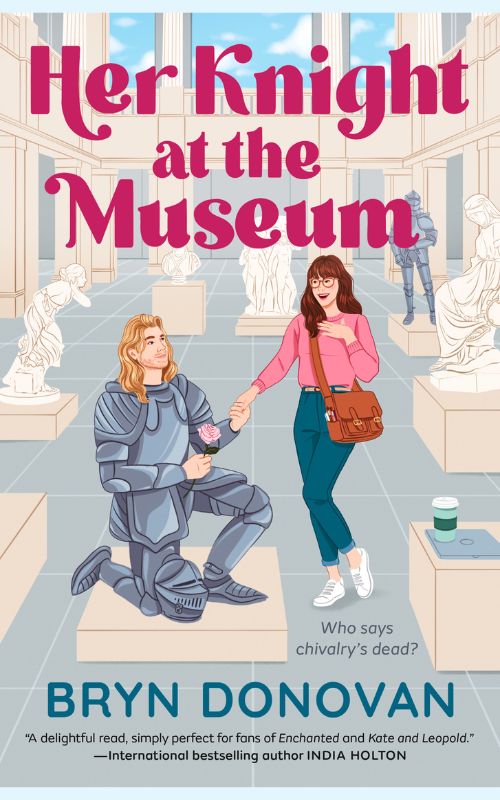

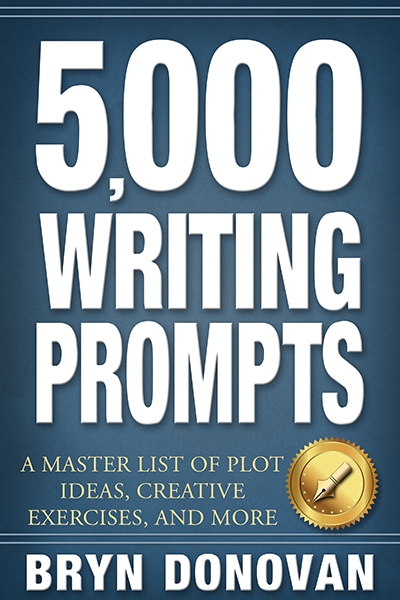
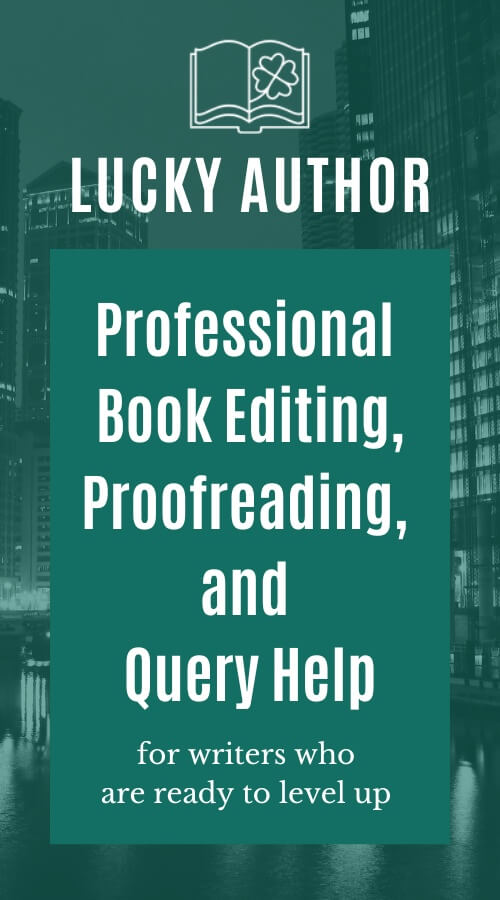
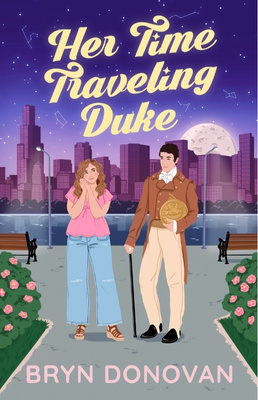
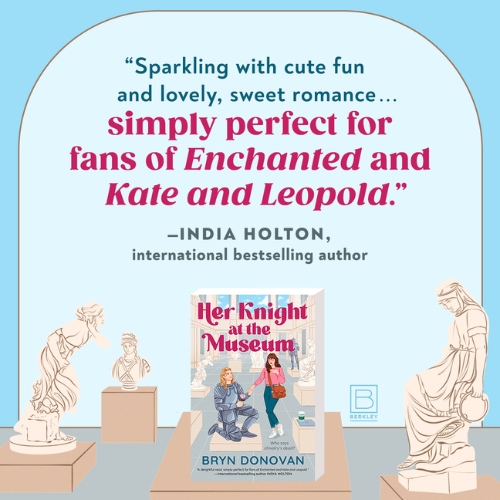
Hi Bryn: I like the One Index Card method. For plotting in the past, I have taken a piece of paper and drawn a line on it horizontally and put little offshoot lines with plot points at beginning, middle and end – and then eventually filled in the spaces in between. Thanks for the tips and the motivation!
Ahh, that sounds so smart! Thanks for the kind words, Cheryl, as always. 🙂 Hope your writing and everything else is going well!
I use KM Weiland’s Scrivener tutorial, which includes her basic plot/story structure. I’ve tried a million things before, but this one has worked best for me.
(And I will personally recommend her Scrivener tutorial for Scrivener users)
http://www.helpingwritersbecomeauthors.com/secrets-story-structure-complete-series/
Oooh, thank you Laura! I really do think I’ll love Scrivener once I get a handle on it. (I’m on deadline for the current story, but once I get through that…) 🙂
I don’t really know anything about it – I just fumble my way through her template 🙂
I did find this via Facebook, and eventually I’ll have a few minutes to check it out. http://learnscrivenerfast.com/scrivener-secrets-03
I have scads of index cards on my kid story…mostly notes about holidays, clothing, and so on. (each card is a bit of information) Not quite plotting, but semi organised like a road map! Like trying to use Mapquest from the mid 90’s in certain cities…. good stuff here, Bryn!
That sounds like a great idea! I have private Pinterest boards for some stories… I know Scrivener is supposed to be good for organizing all your material, and for some reason, I have not gotten the hang of it yet (probably because I’ve never looked at any of the tutorials, haha.) But there’s something nice about tangible cards, too!
am not an internet person….
Reblogged this on firefly465 and commented:
Love these posts and the advice they share..
thank you so much for these posts I really appreciate the advice within them.
Oh, thank you for the kind words! And for sharing, too!
Thanks for the link to Jami Gold’s resources! They are amazing and really helpful. I am getting so much out of your series and I am loving it! Thanks Bryn!
Aren’t they amazing?! There’s something there for everyone, really!
Thanks so much for the nice words, and for reading!
I’ve traveled down the index card road. Worked well for me. 🙂
🙂
Hooray! I love worksheets. Thank you for sharing.
I really like the one index card idea for each big “thing” that happens in the story. Having some sort of road map helps to alleviate that panicky feeling I get when I first begin writing. I’d like to have at least a vague idea of where I’m going on this year long journey of writing the novel!?
Thanks for the shout out to my worksheets! And *squee!*–aren’t you the sweetest for picking up one of my books too. 😀
I’m so glad people have found my writing tools helpful!
P.S. The funny thing is that I’m a pantser. But I love story structure, so that keeps me on track. 😉
Ha! I would not have guessed that! 🙂
Jami! I’m so glad you don’t mind. They are such an incredible resource!
Treasured Claim just came in the mail yesterday — what a great premise. I can’t wait!
http://www.amazon.com/gp/product/B00TUWHOI0?keywords=treasured%20claim&qid=1453294210&ref_=sr_1_1&sr=8-1
Thank you! I hope you enjoy it. 😀
Reblogged this on Chris The Story Reading Ape's Blog and commented:
Don’t forget Bryn’s great series is still running…??
Hey there Bryn!
I found this post really interesting, especially because I just finished writing out my own plot!
When I’m plotting my novels I like to write out a mini, one-page “walk-through.” To put it simply: I write the super simplified, super dumbed-down version with all the major events that happen.
I really like this because it helps me to see how the events will flow with each other.
Reblogged this on Kim's Author Support Blog.
Reblogged this on .
I luckily stumbled onto your blog a few weeks back, shortly after I resolved to write a book this year. It has already been so helpful. I now understand why so many attempts in the past have not worked – I did not plan. I thought I was a pantser, I am not. I ordered Debra Dixon’s book and it has assisted me this week as I work out my plot. I know I can do it this time! Thank you so much for sharing your guidance.
Hi E.J.! I’m so glad this was well-timed and that you’re finding it helpful! When it comes to planning, I was a slow learner… I don’t know how many novels I wrote about 100 pages of and then gave up because I had no clue what to do next! (But hey, it’s all practice, right?)
This is going to be your year to do it! Yay!
Hi Bryn!
I’m one of those people that hates structuring plot, as soon as I get basic idea of characters and “story” I just start writing, and maybe that’s one of the reasons I have trouble staying interested in my ideas. So I didn’t have any Index Cards, but I used some notebook paper and began writing first big thing, second, third fourth, etc. And it helped me out a lot, and I couldn’t believe that I could come up with all this information for my story. So thank you so much! This has been very helpful, and I can’t wait to start writing this!
Hi Victoria! Oh my gosh, that is so good to hear. I hope your story goes great — bet it will! Thanks for commenting 🙂
I’ve used a few of Jami Gold’s worksheets and they are very useful 🙂
I like your index-card method. I’m going to use it to check where I am and where I’m going in the novel I’m working on.
Awesome, Nicki! I hope it’s useful for you. And I hope your writing project goes great!
Great suggestions, the snowflake method sounds interesting and I’m going to give it a try. I’ve been reading some of your other tips too, all really helpful. I signed up to your newsletter and had a confirmation request from SUMO, is that your checker?